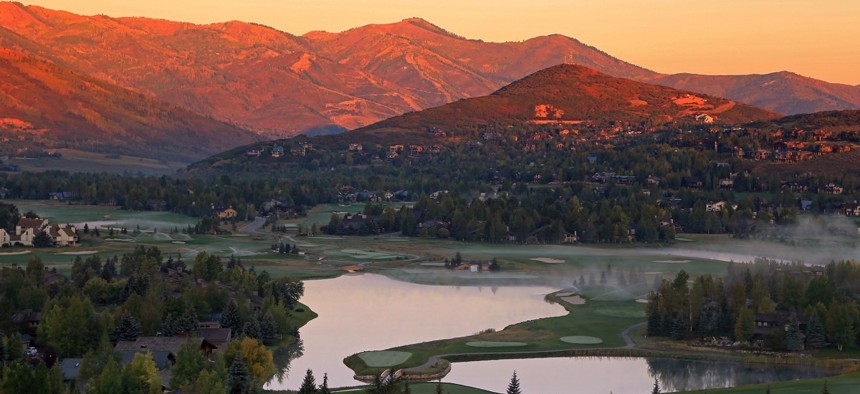An Advanced Sensor Network Will Help Utah Cities Figure Out Their Urban Biorhythm

Park City, Utah Johnny Adolphson / Shutterstock.com

Connecting state and local government leaders
Anonymized data captured from passing WiFi and Bluetooth signals will help Park City understand travel patterns in various subpopulations. And that could aid economic development efforts.
Every year, the population of Park City, Utah, swells with ski season and the Sundance Film Festival, bringing 2 million tourists in and out of the mountainous municipality, which has a population of 8,000 full-time residents.
In January, the city will start to learn more about how everyone moves around town thanks to a pilot project partnership with a Salt Lake City-based Blyncsy, which this summer, set up a network of 25 Blyncsy data sensor boxes attached to streetlights.
Through anonymized WiFi and Bluetooth signals, the sensor network can capture information on 80 percent of travelers passing by. And the amassed data will be able to help the city better understand not just where people going, but what they’re doing, too.
“Maybe down the line because we produce and manage special events we’ll figure out people’s spending habits and permit those businesses who are financially lucrative versus ones that aren’t,” Jonathan Weidenhamer, the city’s economic development director, told Route Fifty in an interview. “It’s all about the quality of the experience and mitigating the impacts of the resort economy because our resorts are kicking butt.”
Through its pilot project, Blyncsy offered Park City its sensors for a yearly subscription fee and has the ability to expand the network based on agency demand.
Good up to 150 feet, the boxes detect everything from Apple Watches to Teslas for a digital traffic study in near-real time. Second-generation sensors will detect cell signals too, but no personal or private data is collected.
As the same device comes and goes, a biorhythm is established that can determine if it represents a car or bike, what other technology it’s paired with and if two or more people are present. Gather many data points and you can begin to figure out how subpopulations of workers and visitors behave, from how they travel to where they eat and shop, Weidenhamer said.
Blyncsy also serves as a data and analytics platform for identifying trends and setting up reports upon request, so Park City can determine if it needs to add more infrastructure, traffic signs or parking. The city currently has no desire to maintain the database itself, preferring its relationship with Blyncsy.
“They shouldn’t have to do that because they don’t have any traffic analysts on staff,” Mark Pittman, Blyncsy founder and CEO, said in an interview. “We can turn the data into useful information.”
That could mean alerting Park City municipal personnel when traffic exceeds a certain level at a choke point, suggesting optimal bus counts and schedules, or helping police determine if crowd control is needed at an event.
Reduced levels of traffic also means lower emissions.
“That’s the hope,” Matt Abbott, the city’s environmental project manager, said in an interview. “We’re asking how can we best utilize our transit system to keep people out of gridlock so everything keeps moving smoothly.”
Long term the city will explore how to use traffic data to boosts tax revenue and helps startups. Weidenhamer’s team has shown business organizations, like the Historic Park City Alliance, the capabilities of the data capture and analysis.
Commercial developers are also interested in toying with data to learn the habits of people moving through the city.
“The more you understand who your customer is, the better you can serve them,” Weidenhamer said.
Park City was Blyncsy’s first time working with a municipality, having worked with a university and arena previously.
Salt Lake County is a client. Coming in January, Blyncsy’s next municipal partner is Salt Lake City.
But the company is aggressively targeting other Utah clients with plans to announce seven more soon.
Blyncsy has deployed 2,200 sensors to date and aims to cover every major city in the state within 15 months.
As Park City’s Transit Department ramps up work with Blyncsy, the plan is to look at the free parking in various strip malls and compare employee use to shopper use and make adjustments to boost sales.
“We’re a Bay Area-funded tech startup company using an Uber or AirBnb approach to make government operate more effectively,” Pittman said. “Cities choose how to use our sensor network and data repository and don’t have to build any of it.”
Dave Nyczepir is a News Editor with Government Executive’s Route Fifty.

NEXT STORY: Comcast’s New Philadelphia Agreement Irks Seattle City Hall





